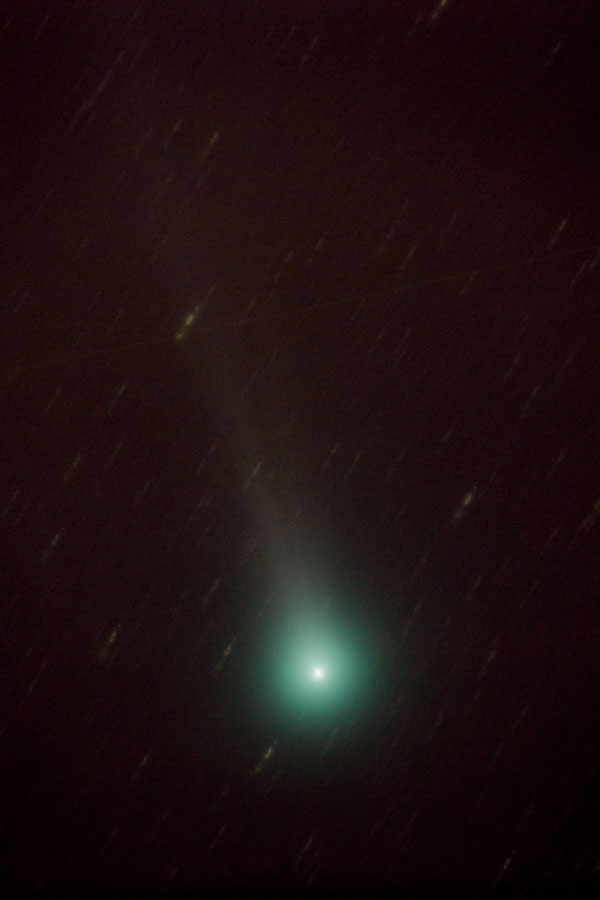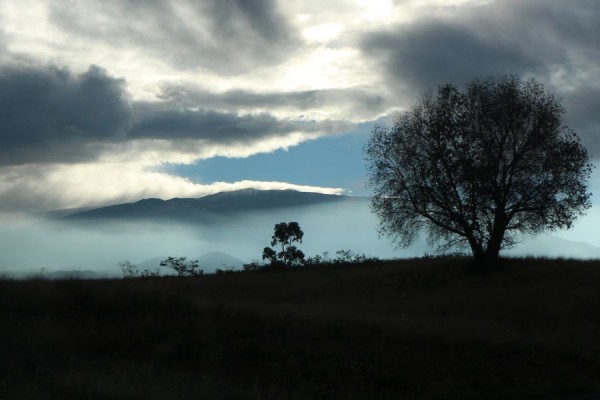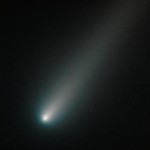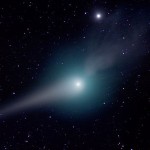I had set the alarm clock for 0230 to get up with plenty of time to setup and take comet photos. What greeted me was a sheet of cloud, an all to familiar sight lately. I did not reset the alarm and went back to sleep. A couple hours later I found myself lying awake again, realizing I would probably not fall back to sleep I got up to look outside. To my surprise Orion shown brightly over the street.
Is there enough time to setup and shoot before dawn?
I rushed the alignment, hoping to setup in less than half an hour. Things did not go smoothly… The EOS utility in the computer did not recognize the 6D, I need to update the drivers. A thin cloud stubbornly sat in front of Polaris, I think I got the polar alignment, the star was very dim on the polar ‘scope. Even when exposures seemed to be going smoothly I they were not. I find out later the auto-guider had moved itself to a hot pixel, probably when a bit of cloud passed through. In the rush I did not get a dark frame for the guider, most of the frames show small guide errors.
One not so bad bit of serendipity… The Hubble Space Telescope went right through one of the frames.
Despite all I did get an image of the comet. It should have been better, rushing astrophotography is not a good plan…








